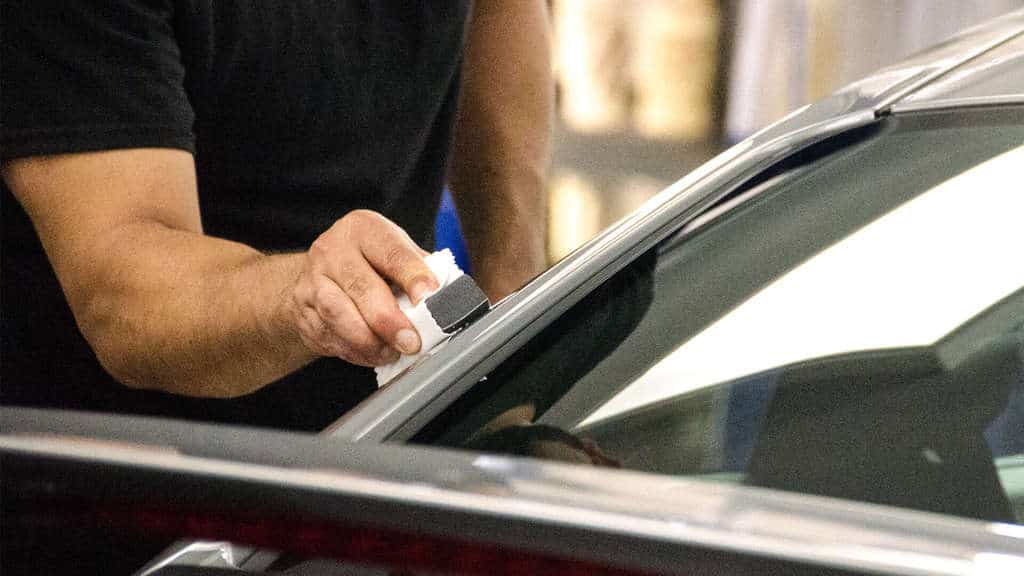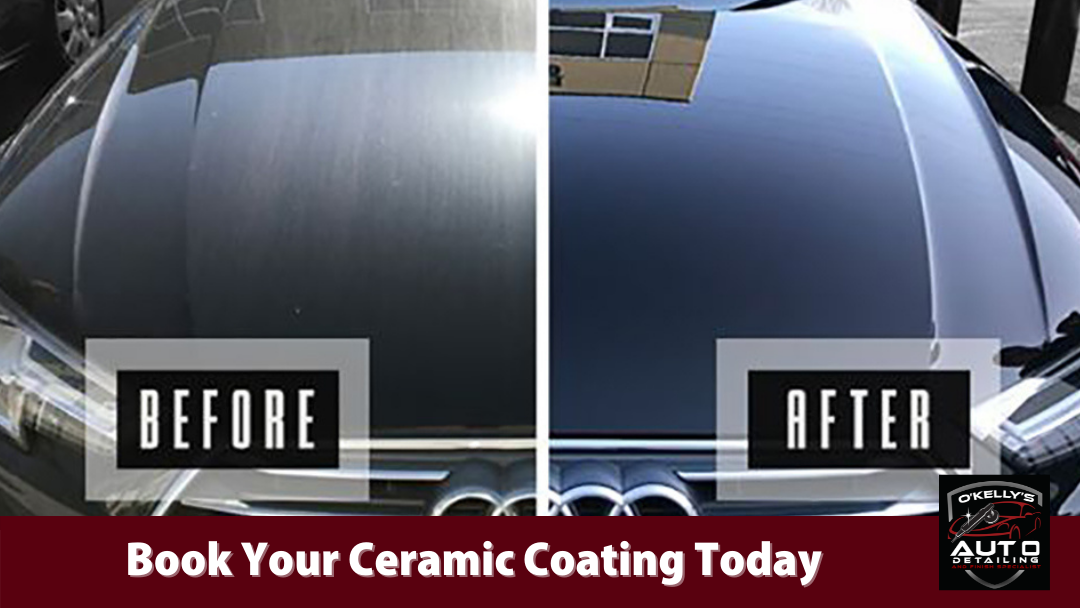Protect Your Car from the Elements with Ceramic Coating Technology
Protect Your Car from the Elements with Ceramic Coating Technology
Blog Article
Ceramic Finishing vs. Traditional Wax: Which Offers Better Long-Term Defense?
The dispute between ceramic finishings and conventional wax for vehicle security has actually garnered substantial focus among automobile lovers and professionals alike. While both satisfy of securing paint, their distinctions in resilience, application, and long-lasting upkeep costs might influence a customer's selection. Ceramic finishings boast superior durability and resistance to ecological elements, yet the complexity of their application questions concerning ease of access and usefulness. As we explore these contrasting options, it becomes crucial to take into consideration not just the instant advantages yet additionally the ramifications for lorry care over time.
Introduction of Ceramic Coating
Ceramic finishing has acquired considerable appeal among vehicle enthusiasts and detailers alike because of its innovative protective qualities. This ingenious modern technology is created to produce a durable, hydrophobic shield over a lorry's paint surface, dramatically boosting its resistance to environmental contaminants such as dirt, UV rays, and chemical spots. Unlike standard wax, which offers a momentary layer of security, ceramic finishings bond at a molecular degree with the paint, providing lasting resilience-- frequently expanding past two years with appropriate maintenance.
The application procedure includes meticulous prep work of the lorry's surface area, consisting of cleansing and polishing to ensure ideal bond. Once used, the layer cures to form a durable layer that not only includes depth and gloss to the paint but also streamlines upkeep. With its hydrophobic residential or commercial properties, ceramic covering enables water and dirt to slide off more quickly, reducing the frequency of washes and lessening the danger of swirl marks.
Furthermore, ceramic layers are offered in different formulations, permitting customers to choose items tailored to their details demands and preferences. Generally, ceramic finishing stands for a significant improvement in paint defense innovation, delivering remarkable efficiency compared to traditional options.
Overview of Standard Wax
Commonly regarded as a staple in automotive care, wax works as a prominent option for those seeking a straightforward approach to boost and safeguard their vehicle's paint - ceramic coating. Automotive wax typically consists of natural ingredients, such as carnauba, or artificial compounds, developed to produce a protective layer externally of the paint. This layer not only improves the automobile's gloss and radiate but also gives a barrier against environmental impurities
The application of wax is generally easy to use, making it accessible for both specialists and DIY enthusiasts. When used, wax requires a healing duration, after which it solidifies to develop a safety shell.
However, while wax works for enhancing the aesthetic allure of a vehicle, it is essential to note that the security it offers may require a lot more regular reapplication compared to different items, such as ceramic finishings. In general, conventional wax stays a popular alternative for those focusing on simplicity of usage and prompt visual enhancement.
Resilience and Long Life Comparison
While both ceramic coatings and standard wax offer protective advantages for auto paint, their sturdiness and long life differ considerably. Conventional wax, generally made from natural carnauba or artificial polymers, typically provides a safety layer that lasts roughly three to six months. This relatively brief life-span necessitates normal reapplication to keep optimal defense.
On the other hand, ceramic coverings are crafted from sophisticated nanotechnology, creating a covalent bond with the paint surface area. This results in a robust, hydrophobic layer that can withstand for two to 5 years, depending upon the product and ecological problems. The superior toughness of ceramic finishings is connected to their chemical framework, which offers boosted resistance to scratches, UV rays, and oxidation.

Security Against Environmental Factors
Securing an automobile's paint from ecological aspects is crucial for maintaining its appearance and value gradually. Vehicles are constantly exposed to a variety of components, including UV rays, bird droppings, tree sap, acid rainfall, and roadway crud, every one of which can endanger the honesty of the paintwork.
Ceramic finishes offer a durable defense against these environmental assailants. Unlike typical wax, which can deteriorate swiftly under UV direct exposure, ceramic layers create a durable, hydrophobic layer that withstands the harmful effects of sunlight and toxic wastes. This innovative technology creates a chemical bond with the vehicle's surface, providing superior defense that lasts for several years, even in extreme problems.
Traditional wax, while less complicated to use, generally needs constant reapplication and provides restricted resistance to impurities and UV rays. Gradually, it can damage down, leaving the paint susceptible to scrapes and oxidation. On the other hand, ceramic coverings keep their protective qualities much longer, dramatically decreasing the danger of paint damage and making sure that the lorry preserves its aesthetic appeal. Because of this, ceramic finishes are significantly identified as the superior option for long-lasting defense versus environmental variables.
Application and Upkeep Differences
The methods of application and succeeding upkeep for ceramic finishes and conventional wax vary considerably, influencing the general customer experience and effectiveness i loved this of each item. Ceramic coverings need an even more complex application process, generally involving surface preparation that includes washing, decontaminating, and polishing the car. Once the surface area prepares, the ceramic finishing is applied in a controlled environment, commonly requiring expert expertise to ensure appropriate curing and bonding to the paint.

While both products boost vehicle appearance, the longer-lasting protection offered by ceramic layers may validate their first investment, despite the more requiring application process. Conversely, traditional wax stays a popular selection for those seeking an easier, albeit short-term, option.

Final Thought
Finally, ceramic finishings demonstrate substantial advantages over conventional wax in regards to toughness and environmental defense. With a life expectancy extending two to 5 years and premium resistance to UV rays, dust, and chemical discolorations, ceramic finishings offer a more effective remedy for go now lasting lorry upkeep. Although the application process may require expert proficiency, the resulting price financial savings and reduced frequency of reapplication emphasize the worth of ceramic coatings for those seeking optimal lorry security.
The argument in between ceramic layers and typical wax for automobile security has amassed considerable interest among auto lovers and experts alike. Unlike typical wax, which gives a temporary layer of security, ceramic layers bond at a molecular level with the paint, using resilient longevity-- frequently prolonging past two years with proper maintenance.
While both ceramic coverings and typical wax offer safety advantages for vehicle paint, their durability and long life vary dramatically. For car lovers seeking long-lasting defense, ceramic coatings offer an engaging advantage over traditional wax products.
In verdict, ceramic finishings show considerable benefits over standard wax in terms of longevity and ecological protection.
Report this page